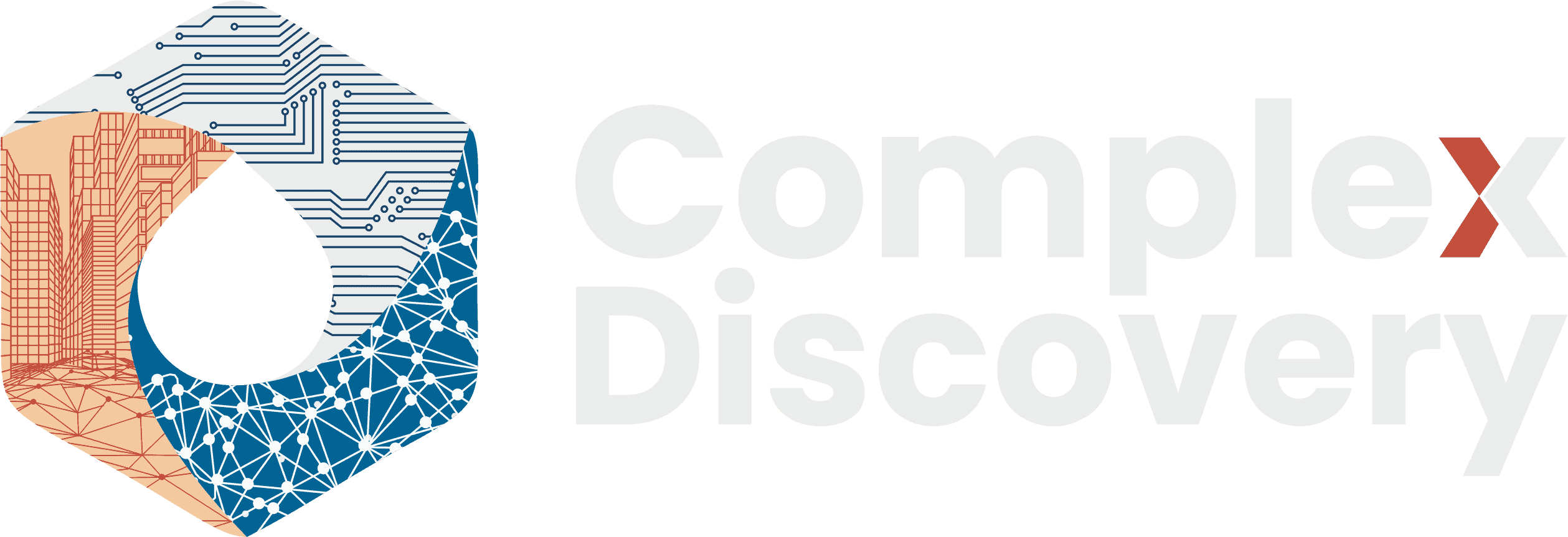Editor’s Note: Legal technology is evolving—fast. As product lifecycle management (PLM) practices shift from static to continuous models and prototyping becomes more accessible through low-code tools and “vibe coding,” the opportunity for innovation in regulated industries like law has never been more significant. This article examines the evolving role of product managers, the emergence of democratized development, and the strategic transformation reshaping how legal organizations develop, test, and deploy solutions. For cybersecurity, information governance, and eDiscovery professionals, understanding this evolution isn’t just beneficial—it’s mission-critical. The future belongs to those who can prototype fast, validate early, and pivot confidently—all while staying compliant.
Content Assessment: Evolving Product Lifecycle Management: The Expanding Role of Product Managers and Democratized Prototyping in Legal Technology
Information - 92%
Insight - 90%
Relevance - 90%
Objectivity - 88%
Authority - 91%
90%
Excellent
A short percentage-based assessment of the qualitative benefit expressed as a percentage of positive reception of the recent article from ComplexDiscovery OÜ titled, "Evolving Product Lifecycle Management: The Expanding Role of Product Managers and Democratized Prototyping in Legal Technology."
Industry News – Technology Beat
Evolving Product Lifecycle Management: The Expanding Role of Product Managers and Democratized Prototyping in Legal Technology
ComplexDiscovery Staff
The convergence of evolving Product Lifecycle Management (PLM) practices, expanding product management responsibilities, and democratized prototyping tools is transforming how legal technology solutions are conceived and delivered. As innovation cycles accelerate and traditional development barriers fall, legal tech organizations are finding new ways to innovate quickly while upholding the rigorous compliance standards their environments demand. This shift is not merely technical—it represents a strategic realignment that empowers legal teams to move at the speed of business without sacrificing governance or control.
The Speed of Innovation Challenge
The frustration is familiar to many legal technology leaders: Simple workflow automations that should take days stretch into six-month projects, while in the consumer space, complete applications emerge over weekends. This disconnect between traditional enterprise development cycles and the rapid prototyping capabilities now available highlights a fundamental shift occurring in Product Lifecycle Management (PLM)—one that has particular implications for the legal technology sector.
The global PLM market is expected to demonstrate robust growth, with various analysts projecting it to reach between $46.81 billion and $149.7 billion by 2032, depending on the market segment definitions. This expansion reflects more than just the adoption of technology; it signals a fundamental transformation from linear, document-heavy workflows to dynamic, iterative approaches that mirror agile and DevOps methodologies. For legal technology professionals navigating increasingly complex regulatory landscapes while facing pressure to innovate rapidly, understanding these changes isn’t optional—it’s essential.
The Modern PLM Framework: From Sequential to Continuous
Contemporary PLM has evolved far beyond the traditional phase-gate processes that once defined product development. Today’s approach embraces continuous innovation cycles that fundamentally alter how organizations conceive, develop, and deliver products. This transformation manifests through interconnected practices that replace sequential handoffs with dynamic collaboration.
Strategic ideation now operates as a continuous process, aligning market trends with business objectives through real-time environmental scanning, rather than relying on periodic planning sessions. Legal technology teams continuously monitor regulatory changes, competitive developments, and emerging technologies, adjusting product strategies as new information emerges. This shift from episodic to continuous strategic thinking enables organizations to respond more quickly to market changes while maintaining strategic coherence.
The emphasis on rapid prototyping and validation has transformed how teams gather and incorporate stakeholder feedback. Rather than relying on abstract specifications and requirements documents, teams create functional demonstrations that allow stakeholders to interact with working solutions. This approach proves particularly valuable in legal contexts, where practitioners often struggle to articulate their needs until they can experience how a solution might work in practice.
The Strategic Evolution of Product Management
The product manager role has undergone a dramatic expansion that parallels these PLM transformations. Recent industry research reveals that economic uncertainty has become a primary challenge for product organizations, forcing product managers to evolve from coordinators to strategic leaders who must balance innovation with resource constraints.
Modern product managers serve as strategic integrators, navigating complex stakeholder ecosystems while maintaining alignment between customer needs, business objectives, and technical feasibility. This evolution extends far beyond traditional requirements coordination into territory that would have seemed foreign to product managers just a few years ago. Today’s product managers must simultaneously understand market dynamics, technology capabilities, regulatory requirements, and user psychology while orchestrating diverse teams toward common objectives.
Perhaps the most significant shift involves product managers’ direct participation in prototyping activities. Rather than simply documenting requirements for development teams, they now create functional prototypes using tools that don’t require traditional coding expertise. This hands-on involvement enables them to test assumptions quickly, validate concepts with stakeholders, and communicate ideas through demonstration rather than documentation.
The Democratization of Development: Enter “Vibe Coding”
A paradigm shift in software development emerged when AI researcher Andrej Karpathy introduced the concept of “vibe coding” in early 2025—an approach where developers use natural language prompts to generate working code through large language models rather than writing code line by line. This methodology represents a fundamental departure from traditional programming, focusing on intent and outcome rather than syntax and implementation details.
The democratization trend extends well beyond individual experiments. Industry projections indicate that by 2025, 70% of new applications developed by organizations will use low-code or no-code technologies, representing a dramatic increase from less than 25% in 2020. Additionally, research shows that 41% of businesses now maintain active citizen development initiatives, formally enabling domain experts to create solutions without traditional programming skills.
For legal technology, this democratization holds transformative potential. Consider a compliance officer who needs to automate document classification for regulatory reviews. Under traditional development approaches, this would require detailed specifications, developer allocation, multiple review cycles, and extended timelines often stretching several months. With vibe coding and low-code approaches, that same compliance officer could create a working prototype within hours, testing different classification rules and refining the logic through natural language instructions.
The Legal Technology Landscape: Ready for Transformation
The legal technology sector is demonstrating remarkable momentum in AI adoption, with recent studies showing usage rates increasing from 19% to 79% in just one year. Legal professionals are increasingly recognizing AI’s potential to transform their practices, with efficiency gains cited as the primary driver for adoption. Research indicates that up to 74% of hourly billable tasks could be automated with AI, fundamentally challenging traditional business models based on time-based billing.
This rapid adoption creates unprecedented opportunities for applying modern PLM practices and democratized development approaches. Legal teams can now prototype contract review workflows by describing business rules in plain language rather than attempting to translate legal concepts into technical specifications. Regulatory specialists can build monitoring dashboards that track regulatory changes affecting their organization, eliminating the need to wait months for IT resources. Legal operations professionals can directly create demonstrations showing how matter intake could be streamlined or how resource allocation could be optimized.
Integration Patterns and Organizational Transformation
The successful convergence of democratized development tools with modern PLM practices requires more than the adoption of technology; it demands a thoughtful organizational transformation. Organizations achieving success with these approaches demonstrate common patterns that balance innovation with governance and experimentation with control.
Hybrid teams have emerged as a powerful model, combining domain expertise with technical capabilities in collaborative partnerships. Legal professionals work alongside technologists, with each contributing their unique strengths to the development process. The legal expert provides context about how work actually happens, what regulations apply, and what risks must be managed. Technical team members ensure that prototypes can scale, integrate with existing systems, and maintain security standards.
The principle of progressive enhancement guides organizations to start with low-risk, high-value use cases before progressing to more complex applications. Teams might begin with internal tools that automate routine tasks, building confidence and capability through early successes. As comfort grows and skills develop, they tackle more complex challenges involving external stakeholders or sensitive data.
Addressing Challenges and Building Resilience
Despite significant benefits, organizations face real challenges implementing these approaches. Security and compliance concerns remain paramount in legal technology, where breaches could compromise client confidentiality or attorney-client privilege. Organizations address these concerns through robust governance frameworks that define clear security requirements, regular security assessments that identify and address vulnerabilities, and clear escalation paths ensuring that high-risk developments receive appropriate oversight.
Quality assurance becomes more complex when non-developers create prototypes that might evolve into production systems. Successful organizations implement peer review processes where prototypes undergo examination by both domain experts and technical professionals. They establish clear criteria defining when prototypes require professional development team involvement, ensuring that enthusiasm for rapid prototyping doesn’t compromise system reliability.
Change management proves essential because these approaches require significant cultural shifts. Legal professionals accustomed to formal IT request processes may resist taking direct responsibility for prototype creation, viewing it as outside their role or fearing they lack the necessary skills. Organizations overcome this resistance through comprehensive training programs that build confidence, support systems that provide help when needed, and celebration of early wins that demonstrate value.
Future Implications for Legal Technology
The integration of expanded PLM practices, evolved product management roles, and democratized prototyping tools points toward fundamental changes in how legal technology evolves. These changes extend beyond faster development cycles to reshape the relationship between legal practice and technology innovation.
Accelerated innovation cycles will become standard as the time from idea to validated prototype shrinks from months to days or even hours. This acceleration enables organizations to test more ideas, failing fast when concepts don’t meet needs and doubling down on those that show promise. The ability to rapidly validate assumptions before significant investment transforms how organizations approach innovation.
Competitive differentiation will increasingly depend on how well organizations leverage these capabilities. Law firms and legal departments that successfully combine legal expertise with rapid prototyping capabilities will develop more effective solutions faster than traditional competitors. The ability to quickly respond to client needs, regulatory changes, or competitive threats becomes a source of sustainable advantage.
Bridging the Innovation Gap
Returning to the innovation gap that frustrates so many legal technology leaders—why enterprise legal technology development takes months while consumer applications emerge in days—the answer lies not in technical limitations but in organizational approaches. The evolution of PLM from sequential processes to continuous innovation, the expansion of product management roles from coordination to strategic leadership, and the emergence of democratized prototyping tools offer a clear path forward that can dramatically accelerate legal technology innovation while maintaining necessary quality and compliance standards.
Legal operations directors facing these frustrations now have concrete options available to them. By embracing modern PLM practices that emphasize continuous innovation over sequential development, empowering product managers with broader responsibilities that include direct prototyping, and leveraging democratized development approaches that enable domain experts to create functional solutions, legal organizations can close the innovation gap that has long frustrated practitioners.
The future of legal technology development isn’t about choosing between rapid innovation and careful compliance—it’s about thoughtfully integrating new approaches that enable both innovation and compliance. The teenager building apps on weekends and the enterprise legal team ensuring compliance and scalability no longer represent opposing approaches but complementary capabilities that, when properly integrated, can transform how legal technology evolves to meet tomorrow’s challenges.
News Sources
- The State of AI: Global Survey (McKinsey)
- Everything You Need to Know About AI in the Legal Industry (Clio)
- Product Lifecycle Management [PLM] Market Size, Share, 2032 (Fortune Business Insights)
- Cloud Based PLM Market Size, Share | Report – 2032 (Market Research Future)
- Product Lifecycle Management Market Size, Share & Forecast (Verified Market Research)
- The 2024 State of Product Management Annual Report (ProductPlan)
- Gartner Forecast on Low Code Development Technologies in 2025 (ToolJet)
- 2024 Artificial Intelligence TechReport (American Bar Association)
- 30+ Low-Code/ No-Code Statistics in 2025 (AI Multiple)
Assisted by GAI and LLM Technologies
Additional Reading
- Editorial Intelligence: The Role of Agentic AI in Modern Publishing
- AI in Journalism: Enhancing Newsrooms or Undermining Integrity?
- The Rise of Techno-Journalists: Addressing Plagiarism, Patchwriting, and Excessive Aggregation in the Era of LLMs
- Combating AI Hallucinations: Oxford Researchers Develop New Detection Method
Source: ComplexDiscovery OÜ






































